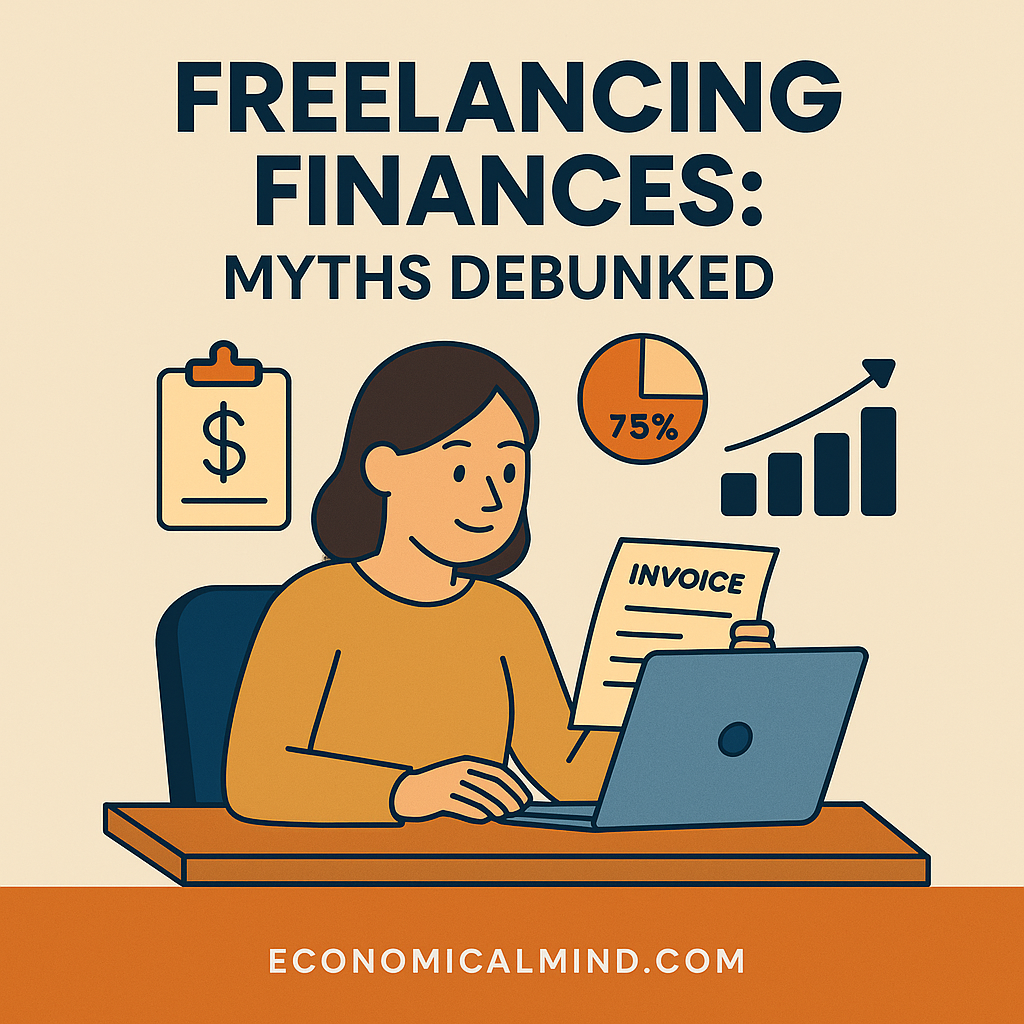
Freelancing offers freedom, flexibility, and control—but it also comes with financial uncertainty that can intimidate newcomers. Whether you’re a creative, developer, or consultant, there are plenty of myths floating around about managing money as a freelancer.
Let’s clear up the biggest misconceptions so you can build a stable, sustainable freelance income without the confusion.
Myth 1: Freelancers don’t have steady income
Yes, freelance income can fluctuate—but that doesn’t mean it’s unreliable. With planning, budgeting, and multiple clients, freelancers can create stability that rivals (and sometimes surpasses) traditional jobs.
The key is consistency in marketing, client relationships, and diversifying income streams—so a slow month from one client doesn’t derail your entire budget.
Myth 2: You don’t need to track business expenses
Every dollar matters when you’re self-employed. Many freelancers overlook deductible expenses like software, internet, travel, or home office costs.
Tracking these expenses isn’t just smart—it can significantly reduce your taxable income. Tools like QuickBooks, Wave, or even a simple spreadsheet make this easy and save headaches during tax season.
Myth 3: Freelancers can’t get approved for loans or credit
It’s true that freelancers face more scrutiny when applying for mortgages, credit cards, or business loans, but approval isn’t off the table.
What lenders want is proof of consistent income. Keeping clean records, maintaining a separate business bank account, and filing accurate tax returns show financial stability and help you qualify.
Myth 4: You don’t need to pay quarterly taxes
Unlike W-2 employees, freelancers don’t have taxes automatically withheld. That means you’re responsible for paying estimated quarterly taxes to the IRS.
Skipping payments can lead to costly penalties later. A good rule of thumb is to set aside 25–30% of each payment for taxes and use IRS Form 1040-ES to stay on track.
Myth 5: Freelancers can’t save for retirement
Many assume that without an employer-sponsored plan, retirement savings aren’t an option. In reality, freelancers have several great choices:
- SEP IRA – for high earners looking for big tax-deferred contributions
- Solo 401(k) – combines employee and employer contributions for flexibility
- Roth IRA – ideal for after-tax growth if your income qualifies
Saving consistently, even in small amounts, makes a big difference over time.
Myth 6: You can’t take time off as a freelancer
It’s easy to feel like you can’t step away without losing clients or income, but breaks are essential for long-term success.
Smart freelancers plan time off by automating systems, informing clients early, and saving a “time-off fund” to cover unpaid days. Building this rhythm keeps your work sustainable—and your mental health intact.
Myth 7: Freelancers can’t achieve financial security
This is the biggest myth of all. Freelancers can absolutely build wealth—it just requires structure. By setting up business systems, tracking income, and saving intentionally, you can enjoy both independence and financial peace.
Plenty of six-figure freelancers exist today because they treat freelancing as a business, not a hobby.
Real ways to strengthen your freelance finances
- Create a separate business bank account
- Set aside 25–30% for taxes after every payment
- Automate your savings and retirement contributions
- Track all expenses and keep digital receipts
- Build an emergency fund covering 3–6 months of expenses
Key takeaway
Freelancing doesn’t have to mean financial chaos. By ignoring the myths and approaching your freelance income like a business owner, you can create financial stability, consistent growth, and long-term freedom—all on your own terms.
